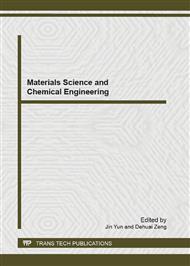p.650
p.656
p.662
p.667
p.672
p.678
p.682
p.689
p.693
Bacterial Toxicity of Functionalized Polystyrene Latex Nanoparticles Toward Escherichia coli
Abstract:
Nanotechnology has the potential to produce a variety of new materials in the coming years, as a result of the design of novel nanoparticles with new physicochemical characteristics. However, their potential to adversely affect the environment and human health must be addressed. The toxicity of polystyrene latex (PSL) nanoparticles with various functional groups toward Escherichia coli KP7600 strain was investigated using the colony count method, and confocal microscopy observations. It was found that the positively charged PSL nanoparticles led to the death of the bacterial cells. Confocal observations of the bacterial cells after 1 h of exposure to the amine-modified, positively-charged PSL nanoparticles in an aqueous NaCl solution showed that the surfaces of the dead cells were almost entirely covered with the nanoparticles. No uptake of the nanoparticles into the bacterial cells was observed, regardless of the cell viability. It is likely that the adhesion of the positively charged nanoparticles onto the surface of the bacterial cells (due to the electrostatic attractive force) caused a decrease in the fluidity of the cell membrane, and the inhibition of metabolism through the cell membrane led to the death of the bacterial cells.
Info:
Periodical:
Pages:
672-677
Citation:
Online since:
May 2013
Keywords:
Price:
Сopyright:
© 2013 Trans Tech Publications Ltd. All Rights Reserved
Share:
Citation:


